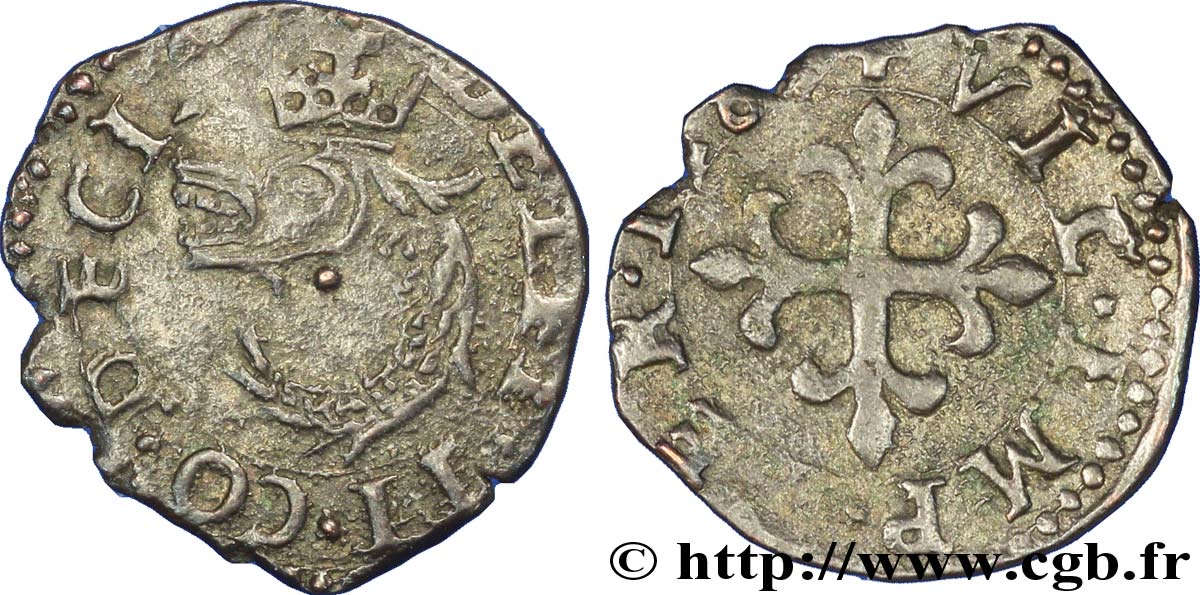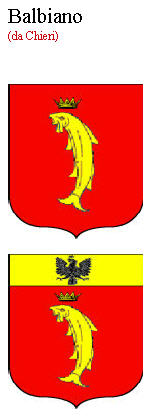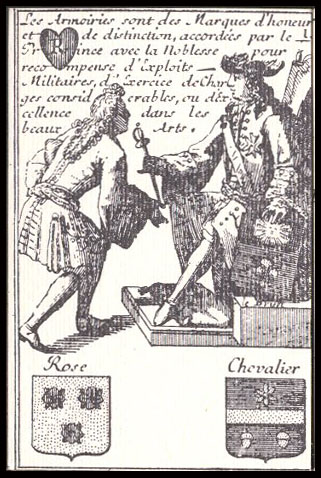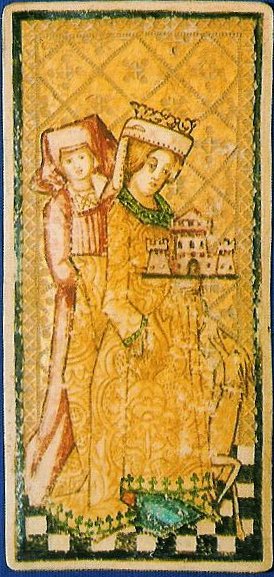mikeh wrote:The questions about Tournai that seem to be relevant are these: (1) if the city was legally part of France (regardless of what language the people there spoke) at the time the future Louis XI was in Burgundian Flanders, would it be feasible for him to get cards made there? And (2) could the Flemish merchants exporting cards to Italy have been from Tournai?
On the second question, it seems to me that merchants from Tournai could have been considered Flemish, because Tournai, even though legally French, was still part of the Flemish-speaking region and itself largely spoke Flemish.
It also seems to me that the demand for cards at that time must have been more French than Burgundian/ Netherlandish, because the city stopped being a producer of cards once it became part of Burgundy/Netherlands
(1)
Well, Louis was mainly in Genappe near Brussels in the 5 years (1445-1461).
Bianca Maria had send a Milanese artist to Rogier van Werden, Zanetto Bugatto. German wiki has him there from Dezember 1460 - May 1463.
https://de.wikipedia.org/wiki/Zanetto_Bugatto
https://it.wikipedia.org/wiki/Zanetto_Bugatto
Kleio.org gives different information (since 1463).
A letter exists, from which there is recorded trouble between Zanetto and Rogier (likely at the start of his visit, so in a time, when Louis was still in Burgundy, early 1461), cause Zanetto consumed too much vine and cause Zanetto took a commission from Louis. Rogier didn't like that, and Bianca Maria had to beg for his patience, that Zanetto could stay. So much I know from various sources.
Rogier was born in Tournai, and became town painter in Brussels in 1436.
Genappe has the shield ...
... which is similar to a castle held by one of the ladies at the Goldschmidt cards.
This story has not so much to do with the card producers of Tournai ... beside the point, that Rogier was "from Tournai" and likely knew the early Tournai card producers there from his youth.
(2)
One of the merchants in Rome is named "Johanni Tornieri" and he travels often with the Flemish merchants (they appear together in the Roman custom records at the same date, that's likely the way how Esch got this info). Johanni Tornieri is not recognized as Flemish by Esch.
The name "Tornieri" appears in 16th century in Italy in context of the printing business: Giacomo Tornieri, printer in Rome.
"Tornieri" is an Italian name (not very common). In an earlier research it seemed, that it had more a North Italian distribution (mainly around Verona).
Persons, who organized the international trade often stayed there, where they traded. Johanni Tornieri might have developed from a "Johannes of Tournay" or from another person "from Tournay". Verona as a starting point has some logic, as Verona is close to the Brenner-Pass (major trade way). Verona close to Tirol with a lot of German/Austrian influences had a natural attraction for people from the North.
Johanni Tornieri is connected to the most unusual deal at the Esch lists. He imported in 1463 "20 doz.triunfi picholi", estimated by the custom officer on 2 1/2 ducats and it is the last entry, that we know from him (no record in 1464 and 1465, though there are records of him in 9 years; actually in every year, which is recorded).
This is the highest number of imported triunfi decks (240) and it is by far the lowest price, so low, that it is around the cheapest card decks, that we know from other prices (on the silk dealer list the prices of Niccolo da Calvello, the specialist for cheap decks).
If there is no reading error in this document, this indicates a production revolution for Trionfi cards. At this moment
likely everybody was able to buy such a deck. The common cheapest price for a Triunfi deck at the silk dealer lists were 9 soldi, in the last deal of Tornieri it looks, as if it had fallen to less than 1 soldi. Roughly 1/100 ducat for each deck.
Parallel to this we see that the most active person in the import of playing cards, Pierozzo di Ser Francesco (25% of the documents, 42 % of the recorded decks) ...
http://trionfi.com/n/130902/
... has only one small import with not numbered "triunfi" and "1 doz.triunphi senza oro" in 1464 and nothing in 1465. In 1463 (before the Tornieri import) he had still 7 doz. Triunfi in a value of roughly 9-10 ducats. Roughly 1/10 ducat for each deck.
On the lists Tornieri was addressed once as "Gugliermo" (1453) and once as "Guglielmo" (1462), possibly a relative, who traveled instead of Johanni.
*********
In modern times we perceive, that cheap productions in China destroy the base for local productions in Europe. Something similar might have happened to the Italian playing card market for some time. Imports from Burgundy, imports from Tournai?
In 1477 the state Burgundy was more or less destroyed in favor of Habsburg and French interests. The start of very intensive French card production is given as of c. 1480 in the region of Lyon.
The Picardy came to France then (1477). Atrecht, Artois and Hainaut came to Habsburg by Charles V., so the French Tournai still was surrounded by foreign territory (as I understand it). In 1521 it came to Habsburg and Tournai lost its special state.
One has to remember, that in the Emperor election of 1519 Charles V. competed with Francois I., the French king and a North-East German candidate Kurfürst Friedrich der Weise. The money of the Fuggers and the wisdom of Friedrich the wise saved the decision for for Charles V.
Tournai had to suffer for it and also Milan dropped back to the empire with the battle of Pavia (1525) and both became Spanish territory after some time.
Tournai had strong fortifications (I think, I've read so), but the cannons improved. So it became English 1513, was given back in 1519 and was in Charles' hands in 1521.
Louis XI must have seen in 1477 and likely already earlier the future troublesome state of Tournai and cared, that France got a strong playing card production in other regions, somehow a logical operation. There was a Burgundian-French war already in 1465, Galeazzo Maria Sforza participated then.
Already that war might have been perceived in Tournai as very dangerous.










